Embroidery, an ancient craft dating back centuries, continues to captivate with its intricate designs and timeless allure.
Within this realm of needlework, the technique of hot iron transfer has emerged as a fascinating method, adding a modern twist to traditional embroidery practices.
In this exploration, we delve into the essence of hot iron transfer, unraveling what it is in embroidery and uncovering the magic it brings to the world of textile art.
As we navigate through the nuances of this technique, we’ll discover how it seamlessly blends tradition with innovation, offering a bridge between the rich heritage of embroidery and the convenience of contemporary methods.
Join us on this journey of discovery as we unravel the secrets behind hot iron transfer in embroidery and celebrate the seamless fusion of craft and technology.
Discover the magic of hot iron transfer in embroidery, seamlessly merging tradition with innovation.
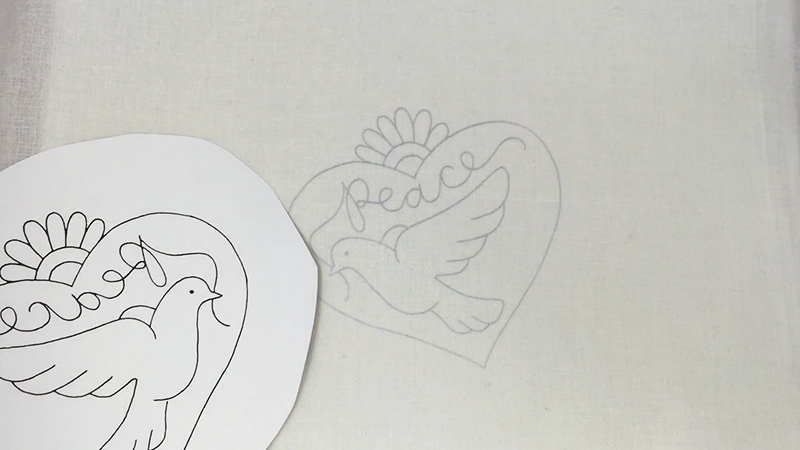
What Is Hot Iron Transfer In Embroidery?
Embroidery has a rich history rooted in craftsmanship, with hand-stitched designs showcasing artistic skill. However, hot iron transfer introduces a more accessible way to replicate detailed patterns.
This technique involves using pre-printed designs on transfer paper, which are then transferred onto fabric through heat. The hot iron transfers the design effortlessly.
Advantages of Hot Iron Transfer
Embarking on the embroidery journey with hot iron transfer brings forth many advantages, elevating both efficiency and creativity.
Time Efficiency
In the realm of embroidery, time is a precious resource. Hot iron transfer emerges as a time-saving hero, significantly slashing the hours required to transfer intricate designs compared to the laborious hand-tracing methods of yore.
This newfound efficiency appeals to artisans seeking a streamlined process without compromising on the intricacy of their creations.
Precision and Detail
The allure of embroidery lies in the intricate details that bring designs to life. With its arsenal of pre-printed designs, hot iron transfer becomes the artisan’s ally in achieving unparalleled precision.
It captures the subtleties and nuances of chosen patterns with a level of accuracy that might prove challenging with hand-drawn counterparts.
Accessibility for Beginners
The world of embroidery can be intimidating for beginners, especially those grappling with the demands of hand-drawing or tracing. Hot iron transfer graciously lowers the entry barrier, providing a welcoming pathway for novice embroiderers.
By eliminating the need for advanced drawing or tracing skills, this method allows beginners to focus on the essence of embroidery.
Consistency in Replication
Crafting a cohesive and uniform embroidery project requires a consistent approach to design replication. Hot iron transfer introduces a level of consistency that is often elusive with hand-drawn patterns.
The heat transfer process ensures that each iteration mirrors the original design, minimizing the likelihood of variations that can arise when translating designs manually.
Exploring Creative Possibilities
Hot iron transfer opens up a world of creative possibilities for embroiderers:
Versatile Fabrics
This technique works well on various fabrics, from cotton and linen to blends and even delicate materials like silk. This versatility allows artisans to experiment with different textures and surfaces.
Color Variety
The pre-printed designs often come with color guides, enabling artisans to envision the final result. This not only aids in the selection of embroidery thread but also inspires creative adaptations.
Combining Techniques
Artisans can seamlessly integrate hot iron transfer with other embroidery techniques. Whether it’s adding embellishments, experimenting with stitches, or combining multiple transferred designs, the versatility of this method encourages artistic exploration.
The Intersection of Tradition and Innovation
Hot iron transfer in embroidery exemplifies the harmonious intersection of tradition and innovation. It preserves the essence of embroidery craftsmanship while embracing modern methods to enhance accessibility and efficiency.
As artisans continue to explore and adapt this technique, the world of embroidery evolves, ensuring its enduring relevance in contemporary creative landscapes.
Hot Iron Transfer Method: A Step-by-Step Guide
Embarking on the embroidered hot iron transfer method opens a gateway to efficiency and precision. This step-by-step guide unravels the intricacies of this technique, providing artisans with a roadmap to transfer intricate designs onto fabric seamlessly. Follow these hot iron transfer steps:
Step 1: Hot Iron Transfer Design Selection
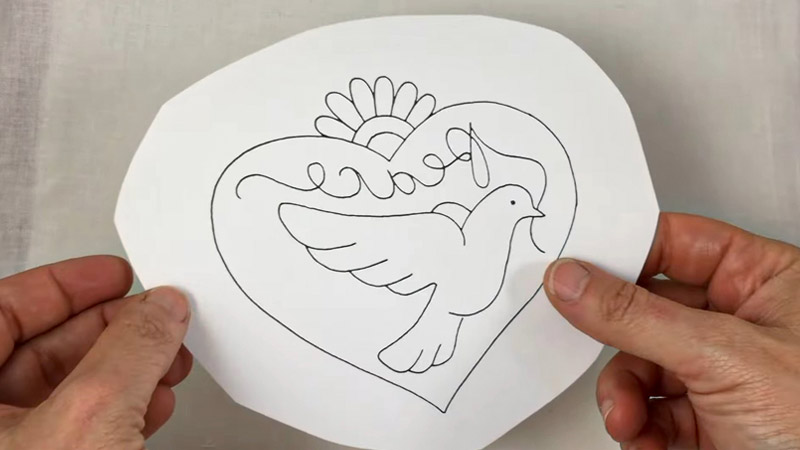
The journey begins with selecting a design tailored to your embroidery project. Whether it’s a delicate floral pattern, an intricate landscape, or a personalized creation, ensure the design aligns with the desired aesthetic and complements the chosen fabric.
Step 2: Transfer Paper Preparation
Prepare the transfer paper by choosing a type suitable for your fabric. Ensure it is compatible with the heat transfer method and has a coating that reacts effectively to heat. Place the transfer paper in the printer, ensuring the design is printed on the correct side.
Step 3: Printing the Design
Print the selected design onto the transfer paper using a standard inkjet or laser printer. Ensure the print quality is optimal to capture the design details accurately. This printed design will serve as the blueprint for your embroidery project.
Step 4: Fabric Selection and Preparation
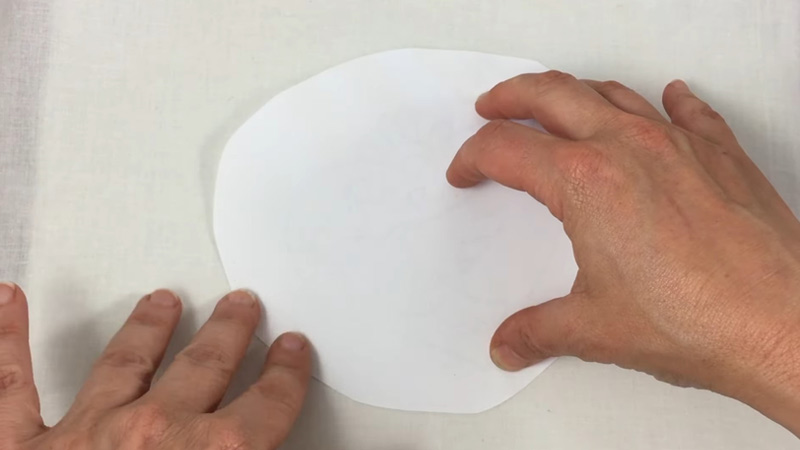
Now, it’s time to select hot iron transfer materials. Choose the fabric for your embroidery project, considering its compatibility with the hot iron transfer method.
Cotton, linen, and blends are popular choices. Ensure the fabric is clean and wrinkle-free before beginning the transfer process.
Step 5: Positioning the Design on Fabric
Lay the fabric on a flat and heat-resistant surface. Carefully position the printed side of the transfer paper onto the fabric, ensuring proper alignment and placement of the design. Use pins or masking tape to secure the paper in place, preventing any movement during the transfer process.
Step 6: Applying Heat
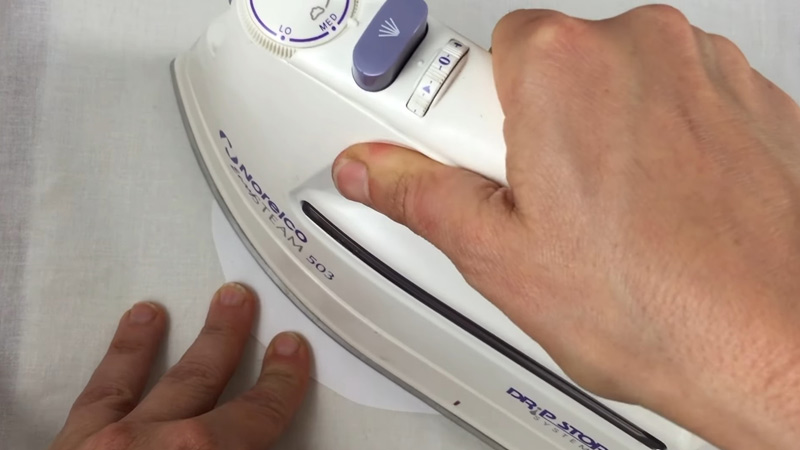
Preheat the iron to the recommended temperature for the transfer paper. Once heated, place the iron over the transfer paper and apply even pressure.
Move the iron in slow, steady motions to ensure thorough heat distribution. Pay extra attention to the edges and intricate details of the design.
Step 7: Cooling and Peeling
Allow the transferred design to cool for a few minutes before gently peeling off the transfer paper. The cooling process ensures the design sets onto the fabric effectively. Peel the paper slowly and steadily to reveal the replicated design on the fabric.
Step 8: Optional Setting
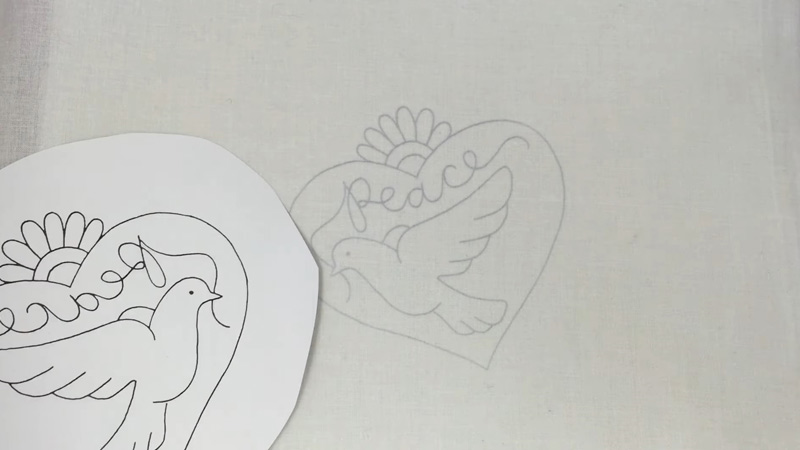
To enhance the longevity of the transferred design, consider placing a clean cloth or parchment paper over it and ironing it once more.
This additional step helps set the design securely onto the fabric, preventing it from fading or peeling over time.
Step 9: Embroidery Preparation
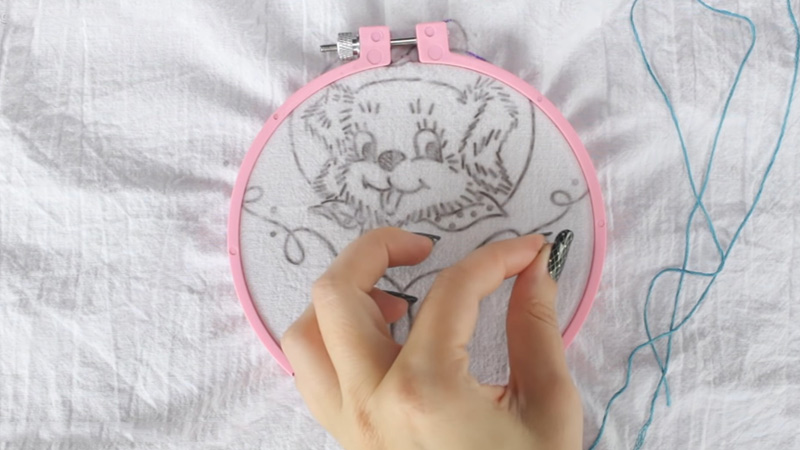
With the transferred design now adorning your fabric, it’s time to prepare for the embroidery process. Select the appropriate embroidery hoop, thread colors, and needles based on your design. Secure the fabric in the hoop, ensuring it is taut and ready for the creative journey ahead.
Step 10: Embroidery Execution
Begin embroidering your transferred design using your preferred stitches and techniques. The precision achieved through the hot iron transfer method is a solid foundation for your embroidery, allowing you to focus on enhancing the design with intricate stitches and embellishments.
Step 11: Final Touches
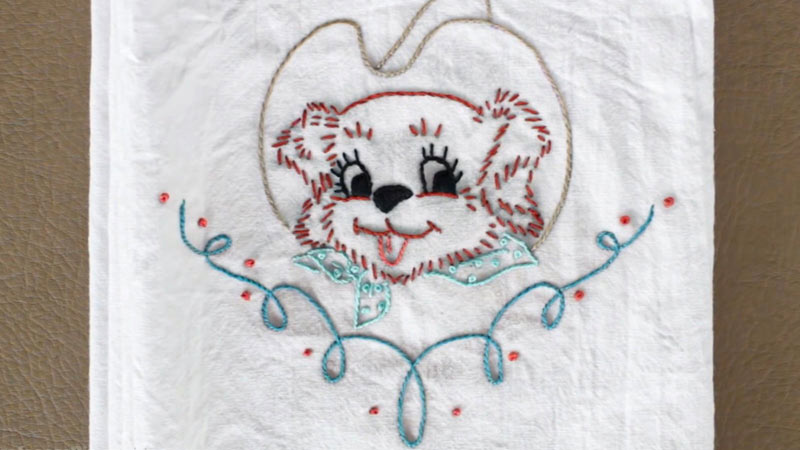
Once the embroidery is complete, take a moment to admire the transformed fabric. Remove any remaining traces of the transferred design using a gentle washing or cleaning method, depending on the fabric’s requirements.
Your finished embroidery project is now ready to showcase the seamless fusion of traditional craftsmanship and modern convenience.
What Are Some Common Hot Iron Transfer Embroidery Patterns?
Hot iron transfer embroidery patterns offer a convenient and precise way to embellish fabric with intricate designs. Whether you’re a seasoned embroiderer or a novice looking to explore this method, here are a few popular patterns to inspire your next project:
Floral Elegance
Delicate blooms, vines, and leaves transferred onto fabric create a timeless and versatile design. These floral patterns suit various projects, from dainty handkerchiefs to elegant tablecloths.
Vintage Charm
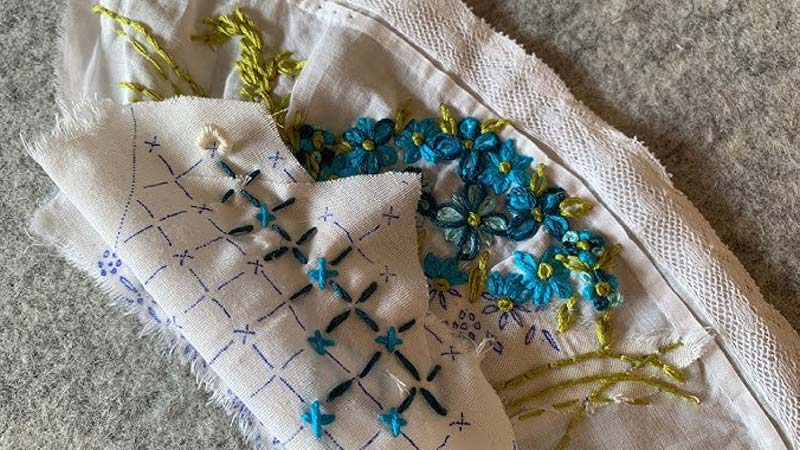
Transport your embroidery into a bygone era with vintage-inspired patterns. Think of ornate motifs, classic monograms, and intricate borders that evoke a sense of nostalgia.
Whimsical Animals
Playful animal motifs add a touch of whimsy to your embroidery. From intricate butterflies and birds to charming woodland creatures, these patterns bring joy and character to your fabric canvas.
Geometric Precision
Embrace the allure of geometric shapes and patterns for a modern, sophisticated look. Geometric designs, such as intricate mandalas or repeating patterns, lend themselves well to hot iron transfer methods.
Seasonal Delights
Celebrate the changing seasons with themed patterns. Think snowflakes and reindeer for winter, blossoms for spring, sunflowers for summer, and rustic leaves for autumn.
Bohemian Vibes
Channel bohemian style with free-spirited patterns featuring dreamcatchers, feathers, and tribal-inspired designs. These patterns add a touch of eclectic charm to your embroidery projects.
Custom Monograms
Personalize your creations with custom monogram patterns. The hot iron transfer allows for precise replication of letters and intricate monogram designs, adding a bespoke touch to your embroidery.
Whitework Elegance
Explore the beauty of whitework embroidery with delicate, monochromatic patterns. These designs often feature intricate stitches on a white or light-colored fabric, creating an elegant and refined aesthetic.
Cute Critters
Delightful patterns featuring adorable animals like kittens, puppies, or baby animals are perfect for adding a touch of sweetness to children’s clothing or nursery decor.
Nature-inspired Landscapes
Bring the beauty of nature to your embroidery with landscapes and scenic patterns. From serene mountainscapes to flowing rivers, these designs evoke a sense of tranquility.
FAQs
What types of fabrics are suitable for hot iron transfer embroidery?
Hot iron transfer works well on various fabrics, including cotton, linen, blends, and even delicate materials like silk. Ensure the chosen fabric can withstand the heat required for successful design transfer.
Can hot iron transfer be used for both intricate and larger designs?
Absolutely. The hot iron transfer is versatile and can be used for both intricate and larger designs. It excels at replicating fine details in intricate patterns and provides efficiency for larger-scale designs.
Are there specific precautions to take during the hot iron transfer process?
Yes, a few precautions are crucial. Ensure the fabric is compatible with heat transfer and the iron is set to the recommended temperature. Secure the transfer paper in place to prevent movement during the process.
Can hot iron transfer be used for more than just embroidery?
Yes, hot iron transfer is a versatile method that can be applied to various crafts. In addition to embroidery, it can be used for fabric painting, quilting, and other textile art projects. The pre-printed designs also serve as a foundation for mixed-media creations.
How can I ensure the longevity of the transferred design on fabric?
To enhance the longevity of the transferred design, consider placing a clean cloth or parchment paper over it and ironing it once more after the initial transfer. This helps set the design securely onto the fabric.
Conclusion
The world of embroidery is ever-evolving, and hot iron transfer stands as a testament to the adaptability of this ancient craft.
Through our exploration, we’ve witnessed how this technique bridges the gap between tradition and modernity, breathing new life into the art of needlework.
The convenience of hot iron transfer has opened doors for both seasoned artisans and newcomers, allowing them to bring intricate designs to life on fabric effortlessly.
As we wrap up our journey through the intricacies of this method, one can’t help but marvel at the harmonious blend of creativity and technological innovation.
Whether you’re a passionate embroiderer or someone intrigued by the world of textile art, hot iron transfer is a vibrant chapter in the ongoing story of embroidery, showcasing its resilience and timeless appeal in the face of changing times. Try the technique at your home today!
Leave a Reply